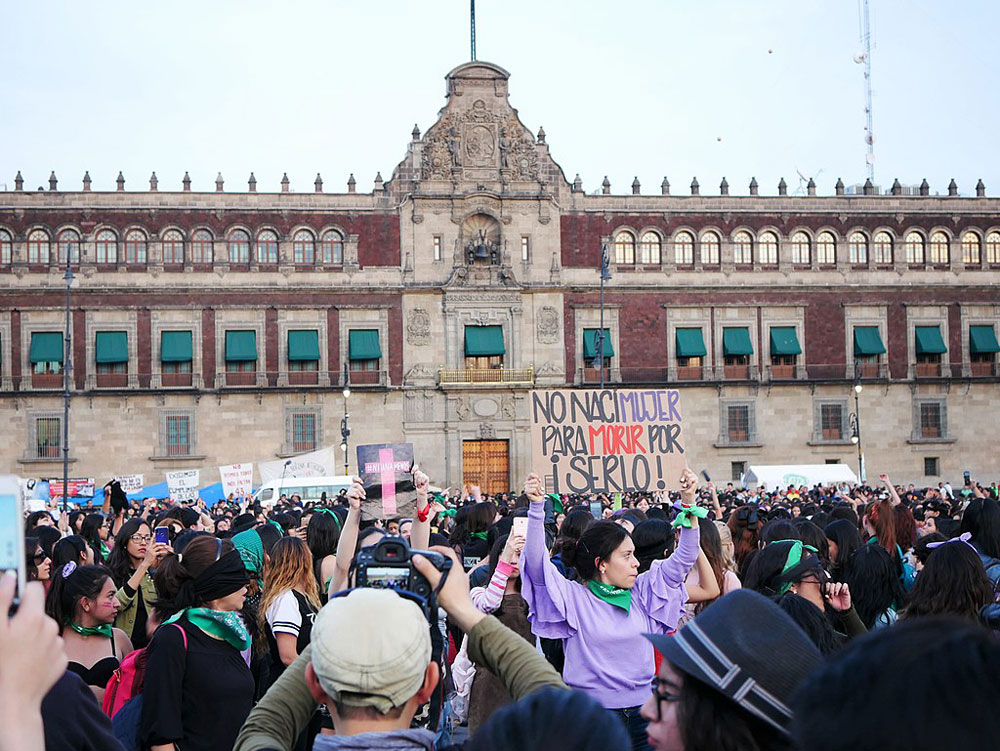
January 24, 2020; Hyperallergic and NBC News
The continuing scourge of femicides in Mexico was brought into stark relief once again with demonstrations on January 25th and beyond that protested the murder of Isabel Cabanillas de la Torre, whose body was found next to her bicycle in downtown Juárez after her friends reported her as missing. She had been shot at 26 years old, herself an artist, an involved participant in a number of women’s groups, and the mother of a four-year-old son. Members of the artist collective to which she belonged described her as someone with “a lot of talent, ideas, and love to share.”
So, why her? “I know Isabel felt like she was being watched,” said a close friend of Cabanillas, who asked not to be named out of fear for her safety. The idea that Cabanillas was targeted for her activism is not out of the question. Others have been for speaking out against femicide. Many have fled Juárez to seek asylum in the US.
Violence against women has been a part of the Mexican landscape for years, but it drew international attention in the 1990s when the numbers increased. This was when the North American Free Trade Agreement was signed, and Juárez saw an increase in manufacturing plants. Many of the female victims were plant workers who were killed going to or from work.
From 1985 to 2014, there were 47,178 women killed in Mexico due to their gender, according to data compiled by RFK Human Rights and the Center for Integral Women’s Development (known by the Spanish acronym CEDIMAC). In recent years, according to Angelita Baeyens, the program director for advocacy and litigation at RFK, there has been a continued increase in femicides. In 2015, the number was 411 in Mexico. It increased to 601 in 2016, 742 in 2017, and 880 in 2018. From January to July of 2019, there were 540 femicides.
“This is certainly not the way we would hope to draw attention to violence against women and the epidemic of femicides in Mexico and the region,” Baeyens said. Cabanillas’ death is a blow to the “movement of courageous women activists, many of them mothers, sisters and friends of victims of femicides in Mexico.” It shows the pattern that continues to happen, especially in Ciudad Juárez. Women disappear and are then found murdered.
Sign up for our free newsletters
Subscribe to NPQ's newsletters to have our top stories delivered directly to your inbox.
By signing up, you agree to our privacy policy and terms of use, and to receive messages from NPQ and our partners.
“It exposes the danger in which women human rights defenders working to combat violence operate,” she says.
The death of Isabel Cabanillas will not be a quiet one. The artist community put out a call for worldwide demonstrations on the Sunday following her shooting. In Juárez, it brought together artists, activists and women’s rights advocates from across the city calling for justice for her, and for all the women who have been victims of femicide in Mexico. Their international call for others to join them is a powerful read:
We call internationally to take to the streets to demonstrate on Saturday, January 25th, we will be mobilizing for the demand of justice for the political femicide of Isabel Cabanillas. We ask for your solidarity, we respect the diversity of struggles and expressions that exist in defense of the women of Mexico. We will not be silenced, and we will unite our fights for our life, our work, our territory, and our lands. Women against war, women against capital, women against machismo and Neoliberal terrorism! We want us alive and organized, let’s strike together in one fist.
Daughters of our Maquilera Mother
Since those demonstrations, which took place across Mexico and in other Latin American cities, rallies and marches continue. Especially in Mexico, the shouts of women directed their anger at the government: “You are the murderers, in the war against drugs it is women who die. This is not an isolated incident; the femicides are crimes of the state. We demand justice.”—Carole Levine











